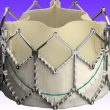These were the most read articles of interventional cardiology in solaci.org. Real-World Revascularization Strategy for Left Main Coronary Artery: Surgery or PCI? There are many current randomized trials comparing percutaneous coronary intervention (PCI) with myocardial revascularization surgery (MRS) for the treatment of left main coronary artery disease (LMCAD). Real-World Results of Different Devices for TAVR Transcatheter aortic valve replacement (TAVR) keeps...
Intervention in Patients with Takayasu Arteritis: Rescue Therapy or an Alternative Complementary to Immunosuppressive Therapy?
Takayasu arteritis (TAK) is an uncommon granulomatous large-vessel vasculitis that affects the aorta and its primary branches. The most frequently types of observed vascular compromise are obstructive lesions, and aneurysmal vascular lesions or dissections. In 2021, the American College of Rheumatology recommended not to implement percutaneous intervention (PI) with these patients and only use immunosuppressive...
The Most Important Articles of 2022 in Structural Heart Disease
Discover the most read scientific articles on interventional cardiology of 2022 in our website. We Should Treat Significant Stable CAD in Patients Undergoing TAVR Aortic stenosis is associated to significant coronary artery disease (CAD) in nearly 50% of cases. When we decide to treat aortic disease using surgery, it has been established we should also treat...
Real-World Revascularization Strategy for Left Main Coronary Artery: Surgery or PCI?
There are many current randomized trials comparing percutaneous coronary intervention (PCI) with myocardial revascularization surgery (MRS) for the treatment of left main coronary artery disease (LMCAD). In the European Society of Cardiology guidelines, PCI is classified as Ia (LMCAD with low-complexity coronary disease) or IIa indication (intermediate complexity), whereas, according to the American Heart Association...
Is the PASCAL Device Effective against MitraClip?
Mitral regurgitation (MR) is the most common valvulopathy and full medical treatment at maximal tolerated doses has been shown quite effective to treat it. However, its limited in a group of patients that require valve intervention. At present, the ideal treatment is surgical valve replacement, which is in many cases is not viable because of...
Valve-in-Valve Shows Good Evolution after 2 Years
The degeneration of bioprostheses in aortic position occurs at approximately after 10 to 15 years. In this scenario, the treatment of choice used to be redo surgery, but with the evolution of transcatheter aortic valve replacement (TAVR), it became a valid alternative with a level IIa B evidence. While there are currently multiple analyses of...
Post PCI FFR
Much research has been done on the usefulness of functional testing such as fractional Flow reserve (FFR) after percutaneous coronary intervention (PCI), resulting in the correlation of pathological FFR values with major adverse events at 6 months, as shown by Pijls, et al. The impact of post PCI FFR on prognosis has not been studied...
A Simple Score for Mortality and Cardiac Failure after Edge-to-Edge with MitraClip
Mitral regurgitation (MR) is the most frequent type of valve heart disease, and the COAPT has shown that edge-to-edge with guideline directed medical treatment (GDMT) at maximal tolerated dose (MTD) is superior to medical treatment alone. However, we did not have a score to predict patient evolution when treated with this strategy. Researchers analyzed the...
TCT 2022 | FRANCE-TAVI Registry: Small Annuli
The presence of small annuli, defined in this registry as < 23 mm diameter or indexed diameter <12 mm/m2 by CT, continues to be one of the greatest challenges of both surgical and endovascular aortic valve treatments. The FRANCE-TAVI Registry looked at 1,195 patients presenting small annuli. 895 (74.9%) received balloon expandable valves (BEV) and...
Primary vs Secondary Retrograde Approach in CTO: Differences
Successful chronic total occlusion procedures are on the rise, especially in high volume centers, seeing as they count on more sophisticated materials and different techniques, such the retrograde approach. However, the significant increase of success rate with this technique has also brought along an increase in associated complications. The aim of this study was to...









